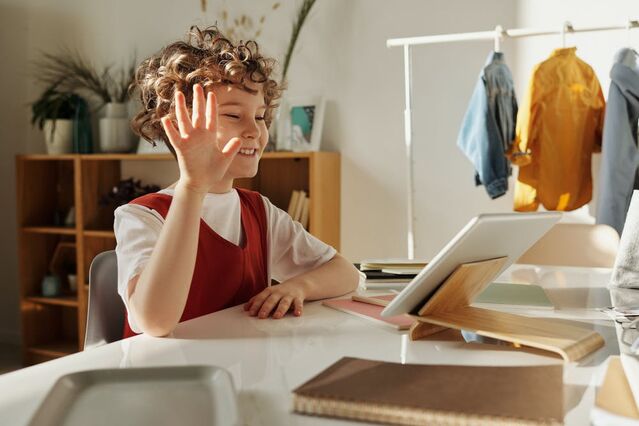Education
I Hate Virtual Learning!
Helping our children get through remote learning.
Posted March 1, 2021 Reviewed by Lybi Ma

- Virtual learning has been difficult for many children who need a multi-sensory learning environment in the presence of teachers and others.
- For many kids, there is a low level of accountability when sitting behind a computer.
- Children are highly distracted and poorly focused. Here are some tips for them to get on track.
Never did I imagine that school would look like each of my three children sitting in front of a computer. Never did I imagine that teaching would take place via video, where the teacher is trying his or her best to re-create the classroom environment. Never did I imagine that a teacher would turn the camera to the board or share her screen as she attempted to present a lesson to students.
Virtual learning has been difficult for many of our children who need a multi-sensory learning environment in the presence of a teacher and other students. Never have I appreciated the physical school space where our children are able to enter into a building, walk through the halls, sit at a desk, and travel around the building to attend different subjects and classes.
Needless to say, it’s been a struggle for us, as parents, a struggle for our teachers, and a struggle for our children.
Virtual Learning Is Just Not the Same
Our children are not learning to the same extent and are not gaining the same level of instruction as they would have had, had they been in the classroom. It’s unfortunate but true. Our children have lost skills in the last year. I can see it in my 8-year-old who, technically, has only had one and half years of in-class instruction since starting kindergarten. And it shows.
To their credit, teachers have tried to find creative ways to present information and engage their students, teaching and learning are just not the same. Teachers feel unsatisfied in that they have not been able to truly develop a relationship with their individual students and with their classes. Students feel unsatisfied in not being able to sit with their peers, whisper to each other, sit side by side, eat lunch together, or walk through the halls together. It’s just not the same.
There Are Low Levels of Accountability
For many of our kids, there is a low level of accountability when sitting behind a computer. I’ve watched my son ride on his hoverboard with earbuds. When I asked him why he’s not “in class,” he pointed to his earbuds and said, “I am.”
It’s very simple for our kids to appear to be looking at the camera while watching a YouTube video, or working on another assignment. Sitting with a series of boxes or circles on a screen that is occupied by supposed classmates (who your child may or may not have met in person) creates a level of anonymity for your child. It does not create the same sense of cohesiveness and belonging that a student might experience if present in the physical space of a classroom and school building.
High Distraction and Poor Focus
Sitting in one’s bedroom, kitchen or dining room in one’s home brings a new level of distractibility, even if your house is quiet. How easy it is to run to the other room to grab a toy or snack or whatever comes to mind? It’s too easy, and that opportunity wouldn’t be available if your child was sitting in the classroom. He may have the thought but not be able to follow through on it. With that said, I know I’m seeing a higher level of impulsivity with my children jumping up out of their seats and following through on whims and spontaneous ideas.
Helping Your Children Through Virtual Learning
- Try to maintain the same sort of expectations for your children if they were in school, such as putting toys away until the lunch break or after school.
- Snacking only during snack time or a break
- Create a change in scenery by changing your child’s workspace throughout the day or for morning classes and afternoon classes. This allows for some movement and a little bit of novelty which may renew focus and interest to complete assignments
- Avoid napping during the day
- Avoid watching shows, videos, or playing video games until after school
- Ask your child to make the commitment to attend to and work on school-related tasks only during the school day and then allowing screen time for leisure once the school day is over
As we are approaching the one-year mark of the COVID-19 pandemic, we all hope that the end is near, and our children can return to school for more days and hours. We hope that the world will begin to open up and our lives will begin to resemble what we remembered it to be one year ago.


